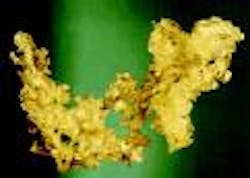Hide-and-seek
Editors described some methods workers used to cover up defects in automobiles and components in the May 5, 1904, issue. In addition to using soap and plumbago (graphite) to hide defects in iron components, workers played games with inspectors.
One story had an inspector demanding a bad part be removed from a car. During the evening shift, the paint crew erased the numbers on the defective automobile as well as the one that was directly in front of it on the line. They renumbered the cars in reverse order and switched them on the paint track.
The next day, the inspector checked the "defective" car and said he had never seen a better replacement job done.
Another automotive job demanded that oil-box bolts should be double-nutted. But the bolts used were single-nut and two threads too short. The inspector raised a ruckus, so the foreman promised to have them changed the next day, a Sunday. While the inspector was out, workers cut threaded pipes long enough for their purpose and turned them into the threads of the nuts on the short bolts. A second nut was run on the extension piece and turned up tightly against the bottom nut, "making to all appearances a double-nutted bolt."
According to the editors, the inspector never knew the difference.
Colorful car descriptions
The auto industry spawns a number of slang expressions that creep into the language, but production workers have a jargon of their own, according to AMERICAN MACHINIST's May 10, 1954, issue.
Ford Motor Co. compiled a short list of its own:
Hockey sticks and bananas: Grille parts shaped like their nicknames.
Dog Leg: The distinctive curve in the body at the bottom of the rear door.
Horsecollar: The U-shaped stamping that supports the radiator.
Spaghetti: A compound that was squirted along fender edges and other sheetmetal parts before welding.
Dum Dum: A sound-deafening compound.
Eyebrows: Front-window rain deflectors.
Gold as a lubricant
The gold or copper served as a filler, or lubricant, that prevented tearing of sintered ingots and excessive tool wear. After machining, the company melted out the impregnated material. According to Philips, the temperatures for adding or removing the filler were well below sintering temperatures, so the process didn't cause distortion or change physical aspects of the tungsten.
